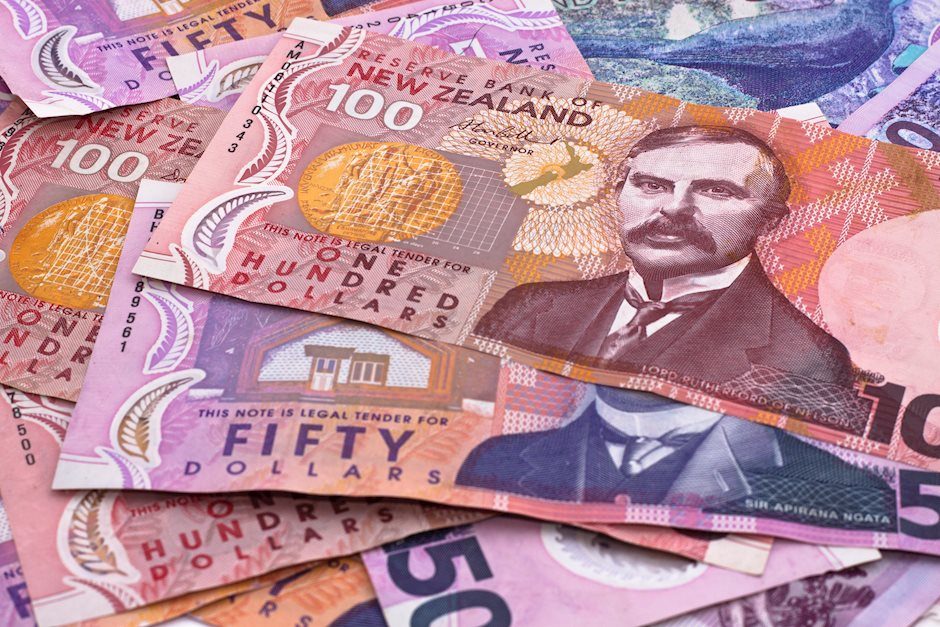NZD/USD bounces off its lowest level since mid-May, remains below 0.6100 ahead of US data
- NZD/USD attracts some buyers near the 0.6070-65 area amid a modest USD downtick.
- The Fed’s hawkish outlook should limit the USD losses and cap the upside for the pair.
- Traders now look to Thursday’s US economic docket ahead of the key US PCE on Friday.

The NZD/USD pair shows some resilience below the 50-day Simple Moving Average (SMA) and stages a modest recovery from the 0.6070-0.6065 area, or the lowest level since mid-May touched during the Asian session on Wednesday. The momentum lifts spot prices to a fresh daily top, around the 0.6085 zone in the last hour and is sponsored by a modest US Dollar (USD) weakness.
In fact, the USD Index (DXY), which tracks the Greenback against a basket of currencies, reverses a part of the overnight strong move up to a nearly two-month peak amid bets that the Federal Reserve (Fed) will cut interest rates in September. Apart from this, the USD intraday slide lacks any obvious fundamental catalyst and is more likely to remain limited in the wake of the Fed's hawkish outlook, forecasting only one interest rate cut in 2024.
Furthermore, the recent comments by a slew of influential FOMC members suggested that the US central bank is in no rush to start its rate-cutting cycle. This remains supportive of elevated US Treasury bond yields, which, along with a slight deterioration in the risk sentiment, could underpin the safe-haven USD. Apart from this, expectations that the Reserve Bank of New Zealand (RBNZ) will cut rates earlier than projected might cap the NZD/USD pair.
Traders might also prefer to wait on the sidelines ahead of the release of the crucial US Personal Consumption Expenditures (PCE) Price Index on Friday before placing fresh directional bets. In the meantime, Thursday's US economic docket – featuring the release of the final Q1 GDP print, Durable Goods Orders, the usual Initial Weekly Jobless Claims and Pending Home Sales – will be looked for short-term opportunities later during the North American session.
Fed FAQs
Monetary policy in the US is shaped by the Federal Reserve (Fed). The Fed has two mandates: to achieve price stability and foster full employment. Its primary tool to achieve these goals is by adjusting interest rates. When prices are rising too quickly and inflation is above the Fed’s 2% target, it raises interest rates, increasing borrowing costs throughout the economy. This results in a stronger US Dollar (USD) as it makes the US a more attractive place for international investors to park their money. When inflation falls below 2% or the Unemployment Rate is too high, the Fed may lower interest rates to encourage borrowing, which weighs on the Greenback.
The Federal Reserve (Fed) holds eight policy meetings a year, where the Federal Open Market Committee (FOMC) assesses economic conditions and makes monetary policy decisions. The FOMC is attended by twelve Fed officials – the seven members of the Board of Governors, the president of the Federal Reserve Bank of New York, and four of the remaining eleven regional Reserve Bank presidents, who serve one-year terms on a rotating basis.
In extreme situations, the Federal Reserve may resort to a policy named Quantitative Easing (QE). QE is the process by which the Fed substantially increases the flow of credit in a stuck financial system. It is a non-standard policy measure used during crises or when inflation is extremely low. It was the Fed’s weapon of choice during the Great Financial Crisis in 2008. It involves the Fed printing more Dollars and using them to buy high grade bonds from financial institutions. QE usually weakens the US Dollar.
Quantitative tightening (QT) is the reverse process of QE, whereby the Federal Reserve stops buying bonds from financial institutions and does not reinvest the principal from the bonds it holds maturing, to purchase new bonds. It is usually positive for the value of the US Dollar.
Author

Haresh Menghani
FXStreet
Haresh Menghani is a detail-oriented professional with 10+ years of extensive experience in analysing the global financial markets.

















